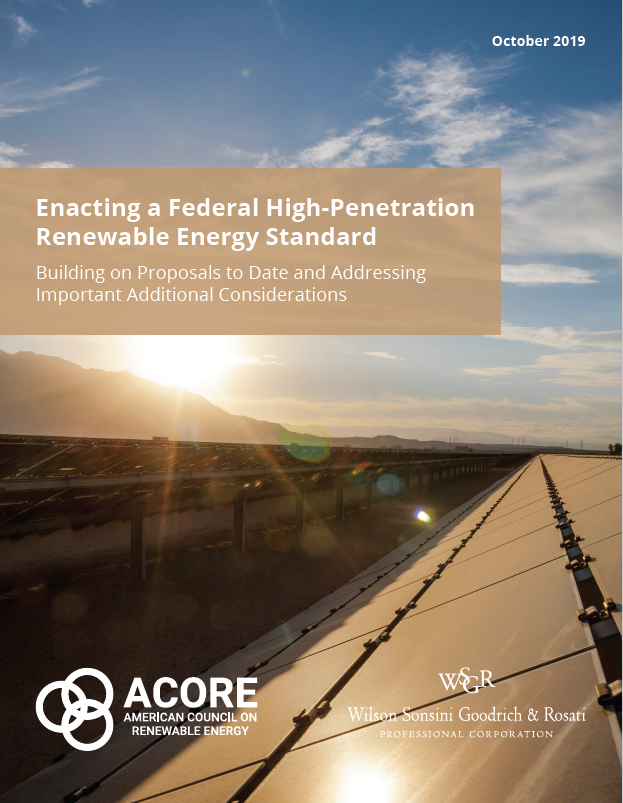- Energy Storage & Decarbonization Pathways
- Grid Infrastructure
- Renewable Energy Innovation
- Tax Incentives & Appropriations
- Reports
Enacting a Federal High-Penetration Renewable Energy Standard
[sdm_download id=”6191″ fancy=”0″]

In a new white paper released today by the American Council on Renewable Energy (ACORE) and Wilson Sonsini Goodrich & Rosati, the organizations offer recommendations on how U.S. policymakers can most effectively design a federal high-penetration renewable energy standard (RES) that enhances grid reliability, creates American jobs, and increases American economic competitiveness globally.
The new white paper, Enacting a Federal High-Penetration Renewable Energy Standard: Building on Proposals to Date and Addressing Important Additional Considerations makes the case for a federal high-penetration RES that embraces the following key features:
- Qualifying technologies should, at a minimum, include wind, solar, hydropower, ocean, tidal, hydrokinetic, and geothermal energy.
- The required percentage of compliant electricity should be at least 50%, on a timeline consistent with climate commitments, recommendations from scientific experts, and other policy goals.
- Alternative Compliance Payments (ACPs) and penalties should be sufficient to achieve RES objectives.
- A federal high-penetration RES should build upon, and not preempt, successful state renewable energy standards.
The new report also addresses important additional issues for consideration when designing a comprehensive federal high-penetration RES, including:
-
- Grid reliability and resilience
- Stranded asset costs
- The need for expanded transmission and energy storage technologies
- The importance of a socioeconomically fair transition
- Complementary policies, like carbon pricing and a technology-neutral tax credit.
[sdm_download id=”6191″ fancy=”0″]
Join leaders from across the renewable energy sector.

What will our next 20 years look like? Here’s the truth: they’ll be better with ACORE at the forefront of energy policy.
Shannon Kellogg
Amazon Web Services (AWS)
